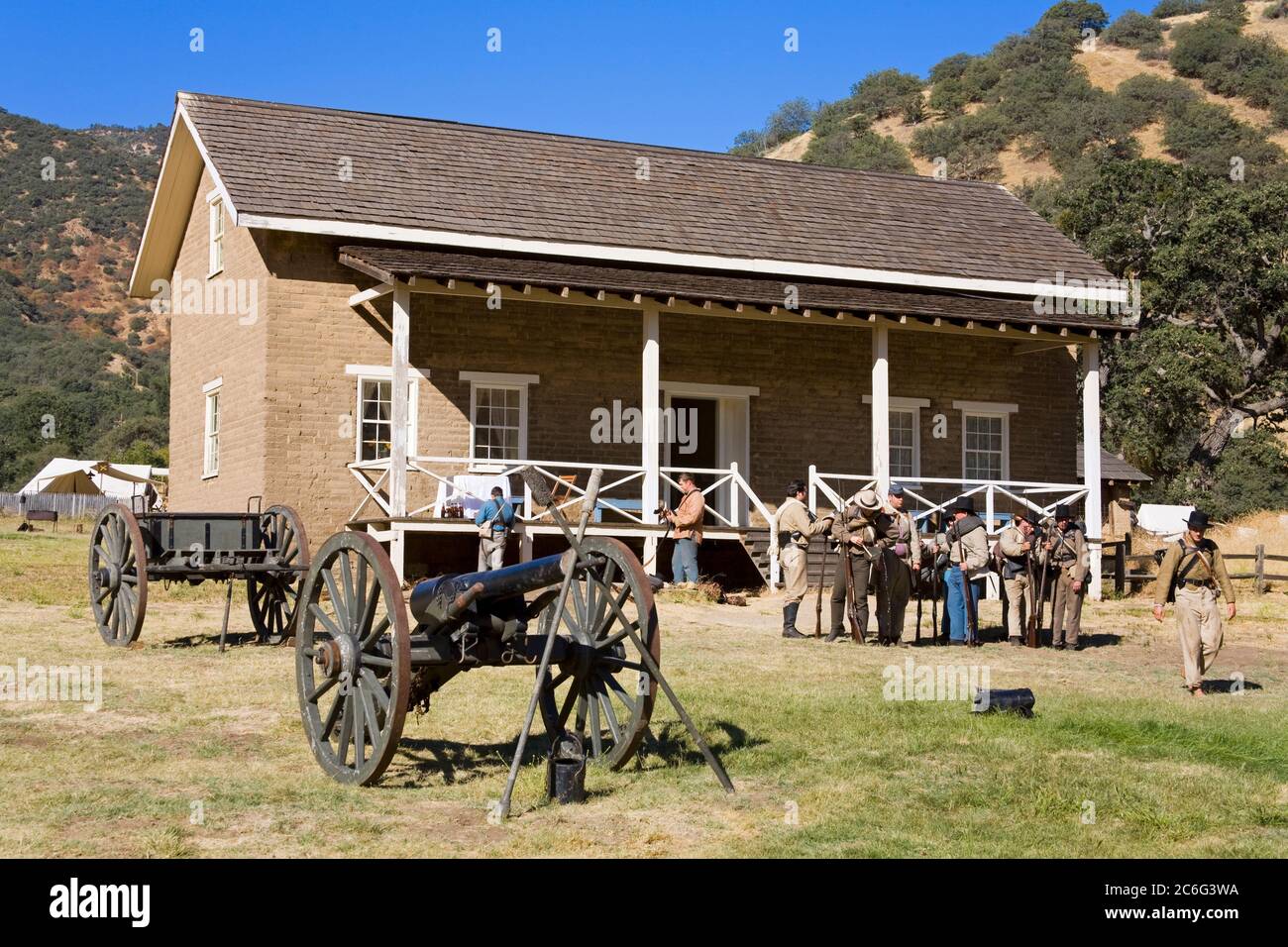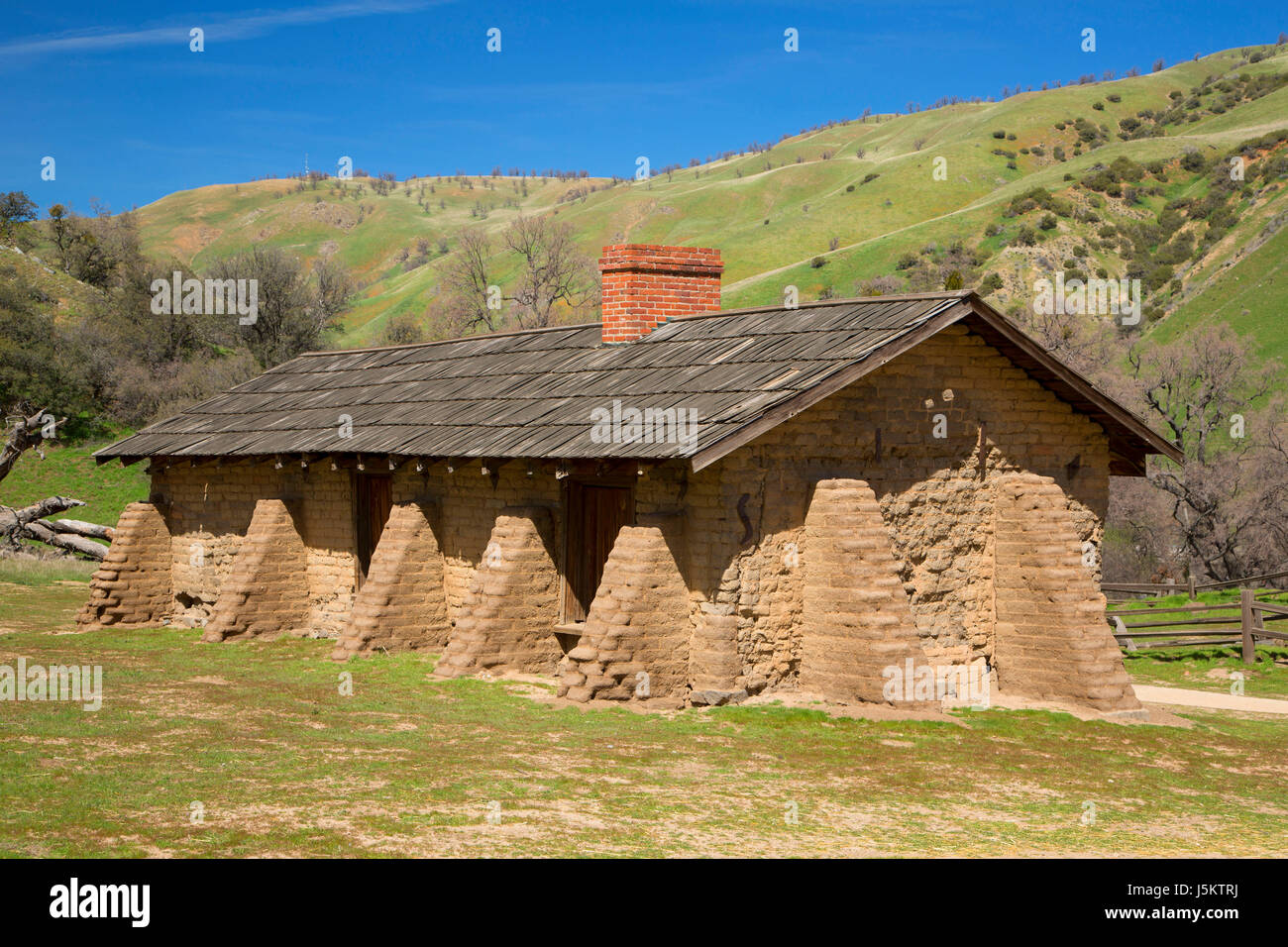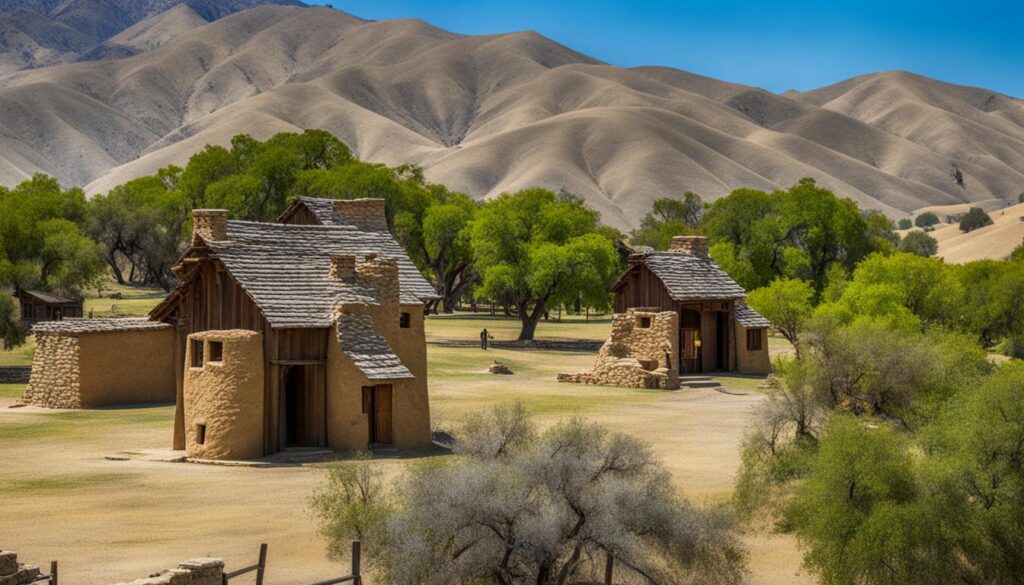
The Desert’s Silent Sentinel: Unearthing the Enduring Legacy of Fort Tejon
Nestled in the rugged embrace of California’s Tehachapi Mountains, where the Golden State’s Central Valley gives way to the high desert, lies a testament to a bygone era: Fort Tejon. Today, its adobe and timber buildings stand quiet, a state historic park that whispers tales of isolation, ambition, and the untamed American West. Yet, beneath its placid facade lies a rich, often surprising history – a frontier outpost that witnessed groundbreaking military experiments, complex human dramas, and played a pivotal role in shaping California’s early identity.
Established in 1854, Fort Tejon was not merely a military barracks; it was a strategic bulwark, a crucial point of control in a vast, rapidly changing landscape. California had only recently achieved statehood, swept into the Union on the tide of the Gold Rush. With the influx of prospectors and settlers came a host of challenges: lawlessness, conflicts with indigenous populations, and the urgent need to establish infrastructure and order in a remote and often unforgiving territory. The U.S. Army was tasked with this monumental undertaking, and Fort Tejon became one of its most important outposts.
The fort’s location was no accident. It commanded the historic Tejon Pass, a vital corridor connecting Southern California with the Central Valley. This pass, historically used by Native Americans, became a key route for overland travelers, freight wagons, and later, the Butterfield Overland Mail stagecoaches. "The Tejon Pass was, and remains, a bottleneck," explains Sarah Miller, a local historian. "Controlling it meant controlling a significant artery of commerce and communication in early California. Fort Tejon was the military’s firm hand on that throttle."

A Frontier Crucible: Soldiers and Indigenous Peoples
Life at Fort Tejon was a monotonous rhythm of drills, patrols, and the constant battle against boredom and the elements. The soldiers, primarily U.S. Dragoons (mounted infantry), were tasked with protecting settlers, maintaining peace, and, controversially, overseeing the nearby Sebastian Indian Reservation. This reservation, established concurrently with the fort, was part of a federal policy to "civilize" and manage California’s indigenous peoples, whose traditional lands and ways of life were being rapidly encroached upon.
The relationship between the soldiers, settlers, and the Tejon Indians and other tribes relocated to Sebastian was deeply complicated. While the fort offered some protection against hostile groups and provided rations, the reservation system itself was fraught with issues. Disease, cultural clashes, and the loss of ancestral lands took a heavy toll. Soldiers often found themselves caught between the demands of the federal government, the fears of white settlers, and the plight of the Native Americans. It was a stark example of the frontier’s moral ambiguities, where good intentions often paved the way for tragic outcomes.
The Camels of California: A Bizarre Experiment
Perhaps Fort Tejon’s most bizarre yet captivating chapter involves its role in the U.S. Army’s "Camel Experiment." Conceived by then-Secretary of War Jefferson Davis (later President of the Confederacy), the idea was to introduce camels as pack animals for military use in the arid American Southwest. Davis, intrigued by their legendary endurance and carrying capacity in desert environments, believed they were "peculiarly adapted to the service of our arid plains."
In 1857, a herd of 25 camels, purchased from Egypt and Turkey, arrived in Texas. A year later, a contingent of these "ships of the desert," along with their Turkish and Greek handlers (including the legendary "Hi Jolly"), were transferred to Fort Tejon. The sight must have been astonishing to the soldiers and local population. "Imagine the scene," recounts park ranger David Chen. "Dusty dragoons on horseback, and then these towering, exotic creatures lumbering through the California chaparral. It was completely out of place, yet entirely logical for the problem they were trying to solve."
The camels proved remarkably adept at traversing the rugged terrain, carrying heavy loads, and enduring the harsh climate. They could go longer without water than horses or mules, and their padded feet were better suited for rocky ground. However, the experiment ultimately failed. American soldiers found the camels difficult to manage, their smell was off-putting to horses and mules, and the logistics of integrating them into existing military practices proved too cumbersome. After a few years, the experiment was abandoned, and the camels were eventually sold off, many ending their days as circus attractions or pack animals for miners. Yet, their brief, improbable stay at Fort Tejon remains one of the fort’s most enduring and fascinating legends.
A Hub of Communication: The Butterfield Overland Mail

Beyond its military and experimental roles, Fort Tejon was also a critical stop on the Butterfield Overland Mail route, which operated from 1858 to 1861. This legendary stagecoach service provided the first reliable overland mail and passenger connection between the East Coast and California, a monumental undertaking that spanned over 2,800 miles. Fort Tejon served as a home station, offering fresh horses, a change of drivers, and a brief respite for weary travelers.
The arrival of the Butterfield stage was a major event, a lifeline connecting the isolated outpost to the wider world. It brought news, letters, and the occasional distinguished passenger, briefly breaking the monotony of frontier life. "The Butterfield route was more than just mail delivery; it was a symbol of national unity and westward expansion," notes historian Dr. Eleanor Vance. "Fort Tejon’s role as a vital link in that chain underscores its strategic importance, not just militarily, but as a communication hub." The rumbling of the stagecoach, the shouts of the drivers, and the brief flurry of activity provided a stark contrast to the fort’s otherwise quiet existence, a fleeting glimpse of the bustling world beyond the mountains.
Decline and Legacy
Fort Tejon’s active military life was relatively brief, lasting less than a decade. The outbreak of the American Civil War in 1861 fundamentally shifted the nation’s priorities. Resources and troops were urgently needed on the battlefields of the East. California, far from the main theaters of conflict, saw its frontier posts deemed less critical. In 1864, Fort Tejon was officially abandoned, its garrison withdrawn, leaving the adobe buildings to the mercies of time and the elements.
For decades, the fort lay largely forgotten. Its buildings were repurposed by the Tejon Ranch, a vast landholding that encompassed the old fort grounds. They served as barns, storage facilities, and even living quarters for ranch hands. The desert winds and occasional rains slowly eroded the adobe, and the timber began to rot. It wasn’t until the mid-20th century that interest in preserving this unique piece of California history began to grow.
In 1940, the fort was acquired by the California State Parks system, beginning a long process of restoration and preservation. Today, Fort Tejon State Historic Park offers visitors a tangible link to the past. Carefully restored buildings, including barracks, officer’s quarters, and the commissary, provide a glimpse into the daily lives of those who lived and served there. Living history events, with reenactors portraying soldiers, civilians, and even a camel handler or two, bring the fort’s stories to life, allowing visitors to experience the sights and sounds of the 1850s.
Fort Tejon stands as a silent sentinel, a reminder of the complex forces that shaped the American West. It represents the ambitions of a young nation, the challenges of frontier life, the often-troubled interactions between cultures, and even the eccentricities of military innovation. From its strategic location guarding a vital pass to its role in a peculiar camel experiment, and its service as a crucial stop on a legendary mail route, Fort Tejon’s legacy is as rich and varied as the California landscape it once guarded. It is a place where history breathes, inviting all who visit to unearth the enduring stories etched into its adobe walls and the vast, silent desert beyond.


